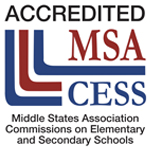Reading is an incredibly large step in your child’s development, but it is often difficult to gauge how your child’s reading skills are coming along. That’s partly because there are two key skills your child exercises as he or she learns to read and, while related, the two are not the same: reading fluency and reading comprehension.

What is Reading Fluency?
Reading fluency is a student’s ability to read a passage with accuracy, speed, and appropriate expression.
Fluent readers are pleasant to listen to; they can read out loud and engage an audience with the text because their reading is compelling and flowing. Fluent reading allows a student to take in content from a macro level and focus on the entirety of a piece rather than individual vocabulary words.
Fluent readers can take in volume because they read quickly, and often that volume allows unfamiliar vocabulary to be determined by context. If you would like to read more about fluency, this 2005 report is a great resource for unpacking the details of reading fluency as an important cognitive skill.
One of the most vital exercises for increasing the fluency of a student’s reading is practice. Sustained, silent reading is an activity that should be done frequently, both in the classroom and at home. Encourage your student to find books that pique his interest as he is more likely to read those than books selected for him.
Additionally, reading aloud to a student using proper inflection, pace, and tone can help the student understand and model reading fluency. In short: read frequently with your student to help him or her develop fluent reading skills.
What is Reading Comprehension?
Reading comprehension is a student’s ability to understand the passage he or she just read.
While reading fluency is an important base skill to have in order for reading comprehension to develop, the two are not identical. Students can often read long passages fluently, but then find themselves unable to answer questions about what they just read.
Reading comprehension is a much more difficult skill to assess than reading fluency, but there are a few methods you can use to help determine if your child is understanding her reading.
One great method is to read together (perhaps chapter by chapter) and then discuss the piece read, asking plenty of questions about the characters, setting, and details that were in the selection.
Make sure you’re asking your child to support his ideas with things he got from the reading. Simply saying, “I think this character is brave” isn’t quite enough to determine reading comprehension. Instead, something like, “I think this character is brave because she faced the dragon” will tell you if your child understood what was going on.
One study indicates that “context fluency,”or a reader’s ability to understand a passage based on some external context, was a strong indicator of reading comprehension. A good way to leverage this would be to find pieces to read together that relate to the student’s world, and then discuss how the piece of reading perhaps changed the student’s point of view about his world. Again, details are helpful indicators of reading comprehension.
There are some studies that conclude that repeated readings of the same text can help bolster reading comprehension skills. Certainly, expanding the student’s vocabulary works to exercise and expand his or her reading comprehension as well.

Conclusion
When it comes to reading, practice really does make perfect. The more you can encourage your student to read, the more adept at the skill he or she will become.
Read together. Read books that are slightly below his reading level to help increase confidence and fluency. Read books that are slightly above her reading level to help increase vocabulary (though this will have to be done together and slowly so as to allow your reader the chance to ask any questions about vocabulary or context that might come up). Read aloud to each other. Take turns picking books. Start a family book club.
Bottom line — read together and read often!






